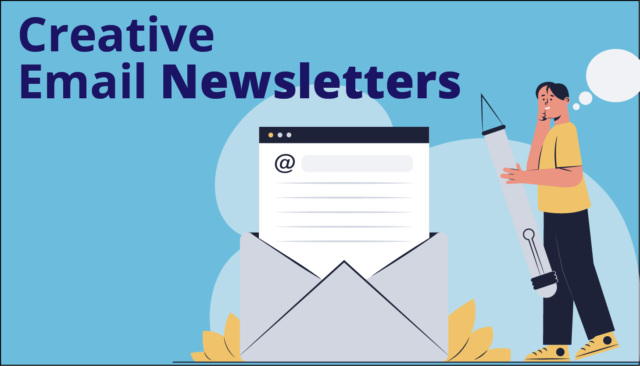Email newsletters are a powerful tool for engaging with your audience, building brand loyalty, and driving traffic to your website. However, creating an effective newsletter requires careful planning and execution. Here’s a comprehensive guide to help you craft newsletters that resonate with your subscribers and achieve your marketing goals.

Table of Contents
Toggle1. Define Your Goals
Before you start designing your newsletter, it’s essential to define your goals. Are you looking to drive traffic to your website, promote a new product, or share industry insights? Understanding your objectives will guide your content creation and help you measure the success of your newsletters.
2. Know Your Audience
Understanding your audience is crucial for creating relevant content. Analyze your subscriber demographics, interests, and behavior to tailor your messaging accordingly. Consider segmenting your audience based on factors such as purchase history or engagement levels to send targeted newsletters that resonate with specific groups.
3. Craft Compelling Subject Lines
Your subject line is the first thing your subscribers will see, so make it attention-grabbing. Keep it concise and relevant, and try to evoke curiosity or urgency. Personalization, such as including the subscriber’s name or location, can also increase open rates. A/B testing different subject lines can help you determine what resonates best with your audience.
4. Design for Readability
The design of your newsletter plays a significant role in its effectiveness. Here are some key design tips:
- Use a Responsive Layout: Ensure your newsletter looks good on all devices, including mobile phones and tablets.
- Keep It Simple: Avoid clutter and use whitespace to enhance readability. Stick to a clean design that allows your content to shine.
- Use Eye-Catching Visuals: Incorporate high-quality images, infographics, or videos to make your newsletter visually appealing and engaging.
5. Create Engaging Content
The content of your newsletter should provide value to your subscribers. Here are some ideas:
- Educational Articles: Share industry insights, how-to guides, or tips that help your audience solve problems.
- Product Updates: Highlight new products, services, or features, and explain their benefits.
- Exclusive Offers: Provide special discounts or promotions to reward your loyal subscribers.
- User-Generated Content: Showcase testimonials, reviews, or photos from your customers to build trust and community.
6. Include Clear Calls to Action (CTAs)
Every newsletter should have a clear purpose, and your CTAs should reflect that. Whether you want readers to visit your website, sign up for a webinar, or download a resource, make your CTAs prominent and actionable. Use compelling language and buttons to encourage clicks.
7. Test and Optimize
Testing is key to improving your email newsletters over time. Experiment with different elements, such as subject lines, content formats, and send times. Monitor metrics like open rates, click-through rates, and conversion rates to understand what works best. Use these insights to refine your strategy and make data-driven decisions.
8. Maintain Consistency
Consistency is vital for building trust and recognition with your audience. Establish a regular schedule for your newsletters, whether it’s weekly, bi-weekly, or monthly. Additionally, maintain a consistent voice and style throughout your emails to create a cohesive brand experience.
9. Respect Privacy and Compliance
Ensure that your newsletter complies with regulations like the General Data Protection Regulation (GDPR) and the CAN-SPAM Act. Always obtain consent from your subscribers before sending emails and provide an easy way for them to unsubscribe. Being transparent about how you handle data fosters trust and improves your brand’s reputation.
10. Analyze and Iterate
After sending your newsletters, analyze their performance to understand what worked and what didn’t. Look at open rates, click-through rates, and subscriber feedback to gauge the effectiveness of your content. Use these insights to make continuous improvements to your newsletter strategy.
Conclusion
Creating effective email newsletters requires a strategic approach that focuses on delivering value to your audience. By defining your goals, understanding your subscribers, crafting compelling content, and optimizing your efforts, you can create newsletters that not only engage your audience but also drive results. Remember, the key to success lies in continuous learning and adapting to the needs of your subscribers, so keep refining your strategy to ensure your newsletters remain effective and relevant.


No responses yet